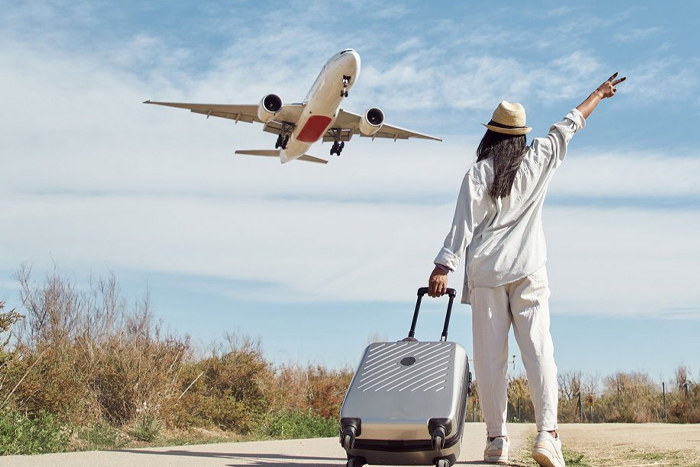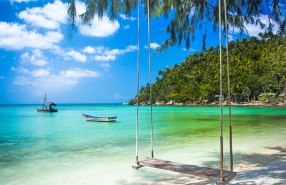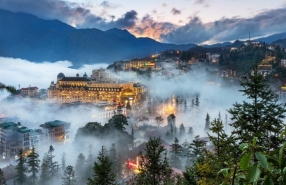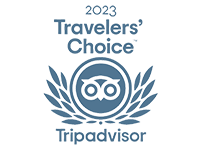What Are The Rules For Airline Baggage In Thailand?

Table of Contents
I. Overview of types of airline baggage

Carry-on baggage: Carry-on baggage is what you keep with you in the airplane cabin. It's usually a small suitcase or backpack that you keep with you in the airplane cabin. They generally must comply with strict size and weight limits to fit in the overhead compartments or under the seat in front of you.
Checked baggage: Checked baggage is what you register at the airline counter and travels in the airplane's hold. They can be larger and heavier than carry-on baggage but are subject to other specific restrictions.
II. Rules for airline baggage
1. Carry-on baggage

a. Size regulations
b. Weight regulations
c. Prohibited items in carry-on baggage
Aviation security regulations impose strict restrictions on items allowed in the cabin. Here's a list of the main articles prohibited in carry-on baggage:
Liquids, gels, and aerosols: Containers larger than 100 ml are prohibited in the cabin. Passengers must limit themselves to containers of 100 ml maximum, placed in a transparent one-liter plastic bag. This concerns drinks, hygiene products, and cosmetics.
Sharp or pointed objects: Knives, scissors, nail files, and other similar objects are prohibited in carry-on baggage for security reasons. They must be placed in checked baggage.
Weapons and replicas: All weapons, whether real or fake, are strictly prohibited in the cabin. This includes firearms, bladed weapons, and even toys resembling weapons.
Explosive or flammable substances: Explosive, flammable, or dangerous materials are prohibited both in the cabin and in the hold. This includes fireworks, matches, fuel lighters, and flammable aerosols.
Work tools: Tools that could serve as potential weapons, such as hammers, large wrenches, or drills, are prohibited in the cabin. They must be transported in checked baggage.
Sports sticks: Large sports equipment such as golf clubs, baseball bats, or hockey sticks are prohibited in the cabin. They must be checked with hold baggage.
Large electronic devices: Some large electronic devices may be restricted in the cabin depending on the airlines. It's advisable to check the specific rules with the airline before the flight.
Prescribed medications: Treatments ordered by a doctor, such as those for diabetes or hypertension, are allowed in the cabin. Bring the necessary quantity for the duration of the trip, accompanied by the corresponding prescription.
Baby food: Baby food, whether powdered or liquid, is allowed on board. Make sure you have enough for the trip and transport them in hermetically sealed containers.
Solid beauty products: Non-liquid cosmetics are generally accepted in carry-on baggage. This includes stick deodorants, eye makeup pencils, lipsticks, and compact powders.
2. Checked baggage

a. Size regulations
b. Weight regulations
c. Prohibited items in checked baggage
Explosive and flammable materials are prohibited. Fireworks, gasoline, kerosene, flammable gases, and aerosols present fire or explosion risks in flight.
Dangerous chemicals are banned. Acids, pesticides, and corrosive products can cause damage to baggage and the aircraft, or present toxic risks.
Weapons and ammunition are generally prohibited. Firearms, replicas, ammunition, knives, and sharp objects are banned to ensure safety.
Uninstalled lithium batteries are prohibited in the hold. They must be transported in the cabin for better fire risk management.
Large quantities of liquids, such as alcohol bottles exceeding the allowed limit, are prohibited to avoid potential leaks and damage.
Valuables should not be placed in the hold. Jewelry, important documents, and expensive electronic devices risk being lost or stolen.
Perishable foods are generally prohibited in the hold. They can deteriorate, causing odors or attracting pests.
3. Additional fees for excess baggage
III. Airline baggage policies
1. Thai domestic airlines

Airlines | Carry-on Baggage | Checked Baggage |
Thai Airways | 1 bag max 7 kg, dimensions 56 x 45 x 25 cm | 30 kg in economy class |
Bangkok Airways | 1 bag max 5 kg, dimensions 56 x 36 x 23 cm | 20 kg in economy class |
Thai AirAsia | 1 bag max 7 kg, dimensions 56 x 36 x 23 cm Not included in base fare, can be purchased separately | Not included in base fare, can be purchased separately |
Nok Air | 1 bag max 7 kg, dimensions 56 x 36 x 23 cm | 5-20 kg included depending on ticket type |
2. Main international airlines serving Thailand

Airlines | Carry-on Baggage | Checked Baggage |
Air France | 1 bag max 12 kg, dimensions 55 x 35 x 25 cm | 23 kg in economy class for most long-haul flights |
Emirates | 1 bag max 7 kg, dimensions 55 x 38 x 20 cm | 30 kg in economy class (may vary depending on destination) |
VietNam Airlines | 1 bag max 7 kg, dimensions 56 x 36 x 23 cm | 23 kg in economy class for international flights |
Qatar Airways | 1 bag max 7 kg, dimensions 50 x 37 x 25 cm | 30 kg in economy class for most long-haul flights |
IV. Useful tips for preparing your air luggage in Thailand

For carry-on baggage, limit liquid items to 100 ml per container, placed in a clear, resealable plastic bag.
Pack power banks and spare lithium batteries in your carry-on baggage, as they are prohibited in checked baggage for safety reasons.
Secure your suitcases with TSA-approved locks or security straps.
Attach a sturdy identification tag to each piece of luggage, clearly indicating your name and contact details.
Add a similar tag inside the suitcase in case the outer tag is lost.
> Kanchanaburi Travel Guide
> 5-star hotels in Kanchanaburi
> Thailand Vietnam itinerary 3 weeks
> Thailand itinerary 2 weeks
To bring a backpack and a suitcase on the plane, first check your airline policies. Generally, you can carry one piece of cabin baggage (suitcase) and one personal item (backpack). The suitcase must comply with the allowed dimensions for overhead compartments, while the backpack should fit under the seat in front of you. Make sure the total weight doesn't exceed the permitted limit, often between 7 and 10 kg (15 to 22 lbs). Be prepared to check one of your bags if the plane is full. Finally, follow the rules for airline baggage to prepare carefully for your trip to Thailand.
In most cases, a handbag is indeed considered a personal item and is allowed in addition to your main carry-on baggage. However, specific policies can vary between airlines, so it's always best to check with your particular airline for their exact rules regarding carry-on baggage and personal items.
Related travel guide
Other similar articles
CUSTOMIZABLE BY LOCAL EXPERTS
Personalized trip at the original price!
REFUND GUARANTEE
We believe in our work and promise to give you money back.
GOOD PRICE / QUALITY
95% satisfied more than expected!
24/7 LOCAL SUPPORT
We are always available online to provide assistance at any time.
Most read articles
Autour Asia is highly recommended on
Embracing the mission of "Satisfied more than expected" and providing authentic experiences, we have received numerous recommendations on reputable travel forums:























